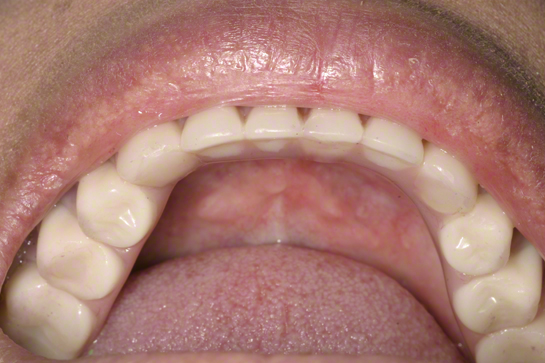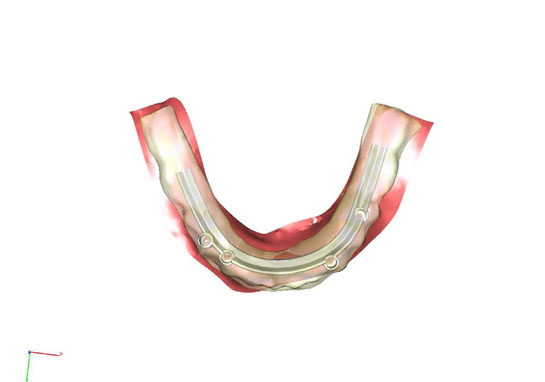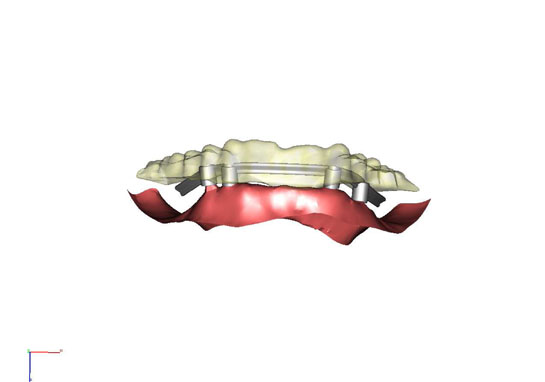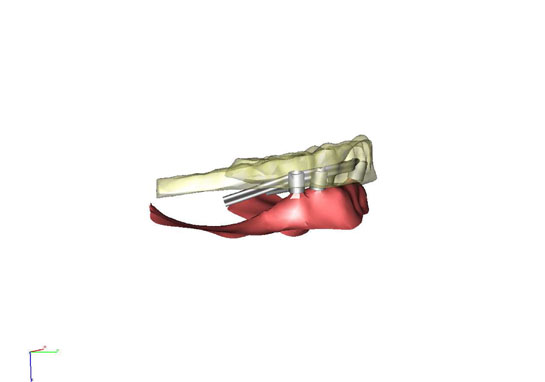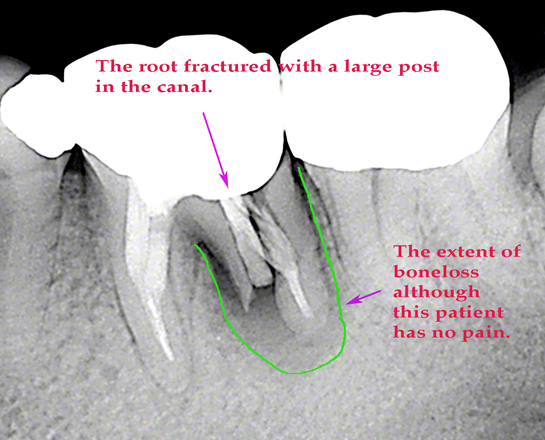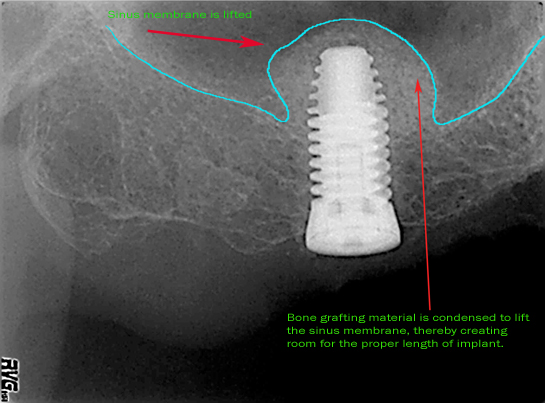Implant dentistry can really change people's lives. In cases where there have been significant amounts of bone and tissue loss, this type of restoration allows the patient to regain both the function and the look of a real dentition. Here is a rough outline of the process:
1. Before the treatment was executed, proper diagnostics were done with study models, X-rays, CT Scan, etc.
2. The implants were then placed, and allowed to integrate with the patient’s bone.
3. An accurate impression was done to capture the implant positions and was sent to the laboratory.
4. The lab then created a duplicate model of the patient’s arch (with the implants replicated exactly how they are in the mouth).
5. A Cad Cam scan was done to design a titanium framework for the prosthesis. See my blog entry dated Dec 4, 2010 about the Cad Cam technology for this same case.
6. The titanium bar is tried in the mouth on the actual implants to ensure accurate fit.
7. Teeth and gum colored materials are placed over the titanium bar.
8. The final prosthesis was placed precisely over the implants in the patient’s mouth. The entire prosthesis was held in placed by screws that fit into the implants. Openings at the screw access were filled with proper composite materials to blend in with the surrounding areas.
9. Proper contacts and functional guidance of the bite were checked and fine-tuned.
The patient once again has a full arch of teeth fixated to his/her arch to replace the missing teeth. This type of restoration takes away the pain and inefficient chewing problem for patients who maybe suffering from the lack of ability to simply … eat.
Case Photos:
Images of actual patients of Alex Nguyen, DDS are Copyrighted and Digitally Embedded to track Unauthorized Use.
The titanium bar on the stone model:
The prosthesis on the stone model. Note the access holes where the implants were positioned.
The final hybrid prosthesis in the mouth. Note all implant access holes were filled.
The patient's smile at completion of treatment.
........................................................................................
Alex Nguyen, DDS is a Saratoga Dentist who practices General Dentistry, Cosmetic, and Implant Dentistry. For over 20 years the practice has been serving the residents of Santa Clara County and San Francisco Bay Area.



